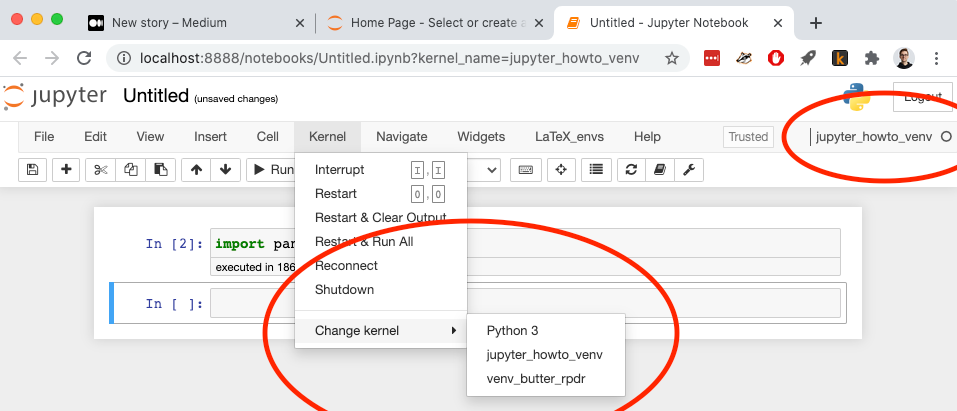

You can then type in the code cell and all Python syntax highlighting will be removed. You can do this by clicking on the drop-down menu that reads code (highlighted in red in the second figure of this notebook) and selecting Markdown. This means when you want to write text, you will need to specifically change it to a markdown cell. Whenever you make a new cell, it's default assignment will be a code cell. Markdown is a markup language that very easily converts to other typesetting formats such as HTML and PDF. In this cell, you can type an execute Python code as well as text that will be formatted in a nicely readable format.Īrguably the most useful component of the Jupyter notebook is the ability to interweave code and explanatory text into a single, coherent document.Įach cell in a Jupyter notebook can exist either as a code cell or as text-formatting cell called a markdown cell. By default, it is registered as code, but it can also be set to markdown as described later.įinally, in red is the code cell. Launch the Terminal again so that we may start Jupyter.
#Osx install jupyter notebook terminal how to#
In the last section, we learned how to start the OS X Terminal. On Mac OS X, create a Desktop folder with the Finder called my-notebook. Jupyter Notebook Launch from Navigator and Terminal ('Jupyter-notebook') gets syntax errors.
#Osx install jupyter notebook terminal mac osx#
Starting a Jupyter Notebook in a Specific Folder. Problem installing Jupyter Notebook and ArcGIS Python API after Mac OSX 10.12.5 update, Syntax Errors 07-14-2017 02:43 PM. In purple is the cell formatting assignment. In both cases, you will want to start the Jupyter notebook in a specific folder. To rename your notebook (shown here as Untitled), you can right-click your document and select Rename. However, the three most important components of the notebook are highlighted in colored boxes. Welcome to the Jupyter notebook! There are many available buttons for you to click. Once you start a new notebook, you will be brought to the following screen. To start a new notebook, click on the "Python 3" logo beneath the "Notebook" section. On the right-hand side, we have a "launcher" interface where we can launch a Jupyter Notebook (highlighted in red), or several other types of files.

You will notice there will be a directory structure on the left-hand side of your window (I navigated to the cbbtn directory we set up in the first tutorial). If everything launched correctly, you should be able to see a screen which looks something like this:


 0 kommentar(er)
0 kommentar(er)
